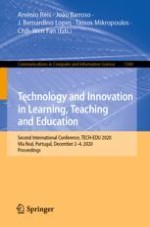This book constitutes the thoroughly refereed post-conference proceedings of the Second International Conference on Technology and Innovation in Learning, Teaching and Education, TECH-EDU 2020, held in Vila Real, Portugal, in December 2020. Due to the COVID-19 pandemic the conference was held in a fully virtual format.
The 27 revised full papers along with 15 short papers presented were carefully reviewed and selected from 79 submissions.The papers are organized in topical sections on digital resources as epistemic tools to improve STEM learning; digital technologies to foster critical thinking and monitor self and co-regulation of e-learning; Covid-19 pandemic, changes in educational ecosystem and remote teaching; transforming teaching and learning through technology; educational proposals using technology to foster learning competences.
